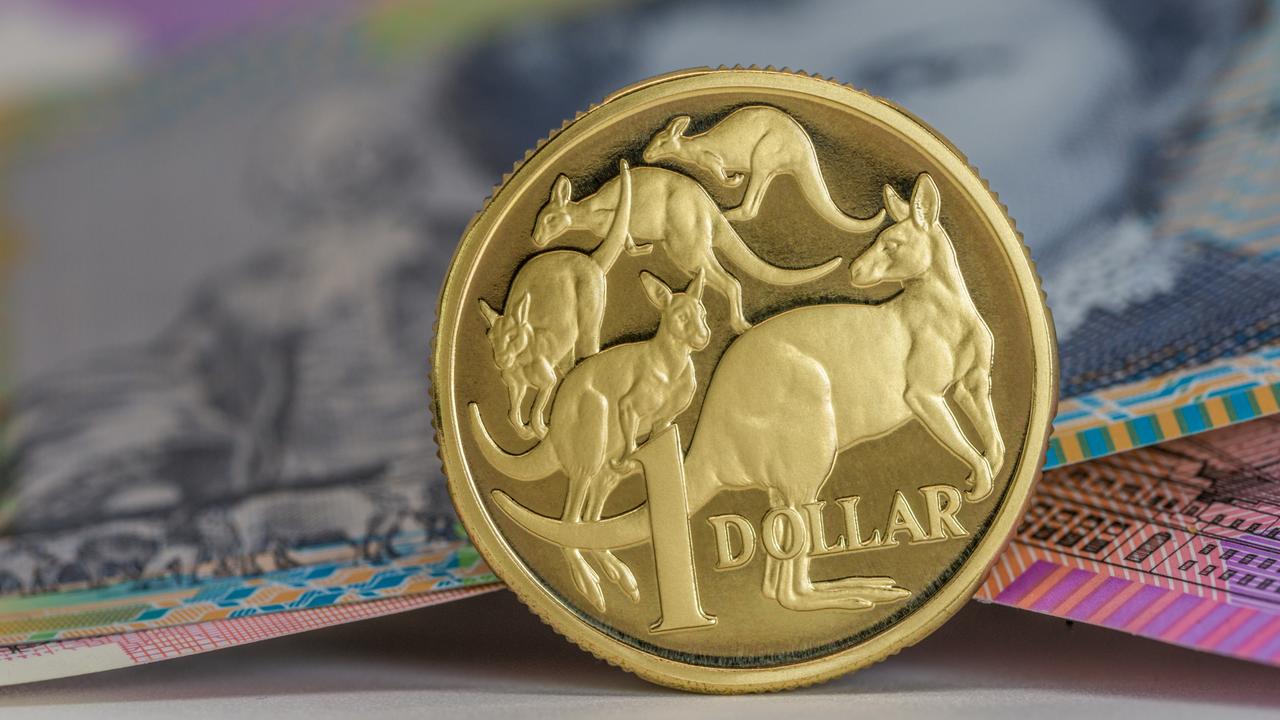Oil up, dollar down: what it means for your investments
Investors impacted by a big bout of volatility in crude oil and the Aussie dollar are being urged to look beyond the noise.
Business
Don't miss out on the headlines from Business. Followed categories will be added to My News.
A sinking Australian dollar and surging global oil prices are causing headaches for consumers, and creating volatility for investors too.
Overseas travel plans are being stung by strength in the US dollar and weakness in China’s economy, which has pushed the value of the commodity-focused Aussie dollar down sharply since July, dropping 7 per cent from US69c to US64c - and touched US63.8c over the weekend.
Meanwhile, motorists are feeling pain at the petrol pump after crude oil prices have climbed almost 20 per cent since late June and are back above $US80 a barrel.
Economists say the outlook for both oil and our currency is clouded by uncertainty around Russia, China, the US and their respective economies.
While investors may be individually impacted depending on the stocks they own, the broader share market generally benefits from a weaker currency because it pushes up export values and underpins higher overseas profits for major Australian companies, they say.
Investors holding overseas shares also benefit when our currency is falling.

CommSec senior economist Ryan Felsman said a crisis in China’s property market was one of several problems facing Australia’s biggest trading partner, and the Aussie dollar was seen as a proxy for risk and the Chinese yuan.
“The Australian dollar is under pressure at nine-month lows,” he said.
“If this continues we could see it track through the next level around US62c. That’s a concern – it’s good for exporters but it costs more to import capital, goods and services.
“Typically a weaker dollar is good for the share market, but the China weakness has fed into the materials sector.”
Mr Felsman said high oil prices, driven by production cuts by Saudi Arabia and OPEC more broadly and ongoing worries about Russian exports, were “an unhelpful scenario for developed economies at the moment”.
US demand for oil had been higher than expected, he said.
It was difficult to predict the future for oil prices, Mr Felsman said, but the current higher levels benefited energy stocks. “We have seen energy producers performing better on the share market, after being sold down at the beginning of the year.”
AMP chief economist and head of investment strategy Shane Oliver said the current climate for the currency and oil was “a messy picture”.
“Normally when oil prices and commodity prices go up it means demand is strong, and therefore the Aussie dollar should go up,” Dr Oliver said.
However, China’s weakness put the Aussie dollar at risk of further downside, and it was also being hurt by expectations of a widening interest rate differential with the US, whose economy appeared stronger than Australia’s and could result in more US rate rises, he said.
The gap is already significant: the Reserve Bank of Australia’s cash rate is 4.1 per cent and the US Fed funds rate is 5.25-5.5 per cent, making US dollars more attractive to global investors.
“Normally a falling Aussie dollar means you are better off having more money overseas as an investor,” Dr Oliver said. “If the Aussie dollar goes down the value of unhedged foreign currency investments goes up.”
Big companies with large offshore operations benefited from a weaker Aussie dollar, he said. “Materials companies are huge beneficiaries – virtually every commodity we sell is priced in US dollars.”
However, Qantas would be battling higher jet fuel prices, and smaller companies that relied on imports would be under more pressure, Dr Oliver said.
Investors who were not active traders and had a long-term strategy should “turn down the noise, and these fluctuations will come and go”, he said.

“Have a well-diversified portfolio – you have got to have a good mix of international shares. Diversification in the key.”
Dr Oliver said there was a risk that oil prices could go higher “depending on how the situation in Ukraine unfolds”, but recessions in the US and elsewhere would push them down.
“There a risk that Russia cuts its oil production significantly, which generally forces oil prices higher, in retaliation for them having a tough time in Ukraine,” he said.
BetaShares Capital chief economist David Bassanese said oil’s outlook was “really in the hands of Saudi Arabia”.
“Saudi Arabia is the swing producer right now, but OPEC doesn’t want an oil price so high that it causes a global downturn,” he said.
Meanwhile, a falling Aussie dollar and rising US interest rates could potentially put pressure on the RBA to raise Australia’s cash rate further, Mr Bassanese said.
“If it goes below US60c, it would be a dilemma for the RBA because it will add imported inflation,” he said.
This was not an issue at current levels, Mr Bassanese said, and he expected the RBA to remain on hold.
“A weaker Aussie is generally good for our share market because we have more exporters than importers,” he said.
“Stronger energy prices are a positive for the energy and resources sector, provided it doesn’t lead to a global recession.”
More Coverage
Originally published as Oil up, dollar down: what it means for your investments









